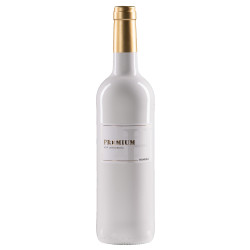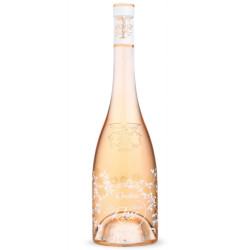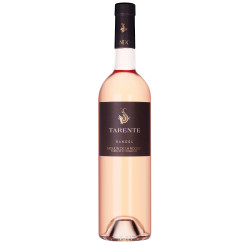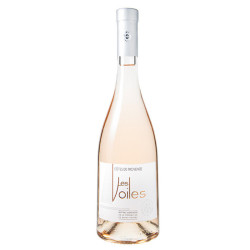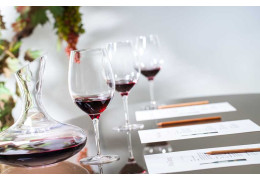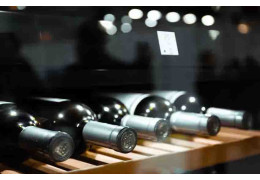The Sommelier's Tips
How to Choose the Right Rosé Wine ? All Our Tips

The Rosé Season is Here!
Terraces, barbecues, gourmet meals, salads, pizzas, picnics with friends, etc.: there are countless opportunities to uncork a beautiful bottle of rosé.
The rosé season is open! Terraces, barbecues, gourmet meals, picnics with friends, and more: the occasions to enjoy a lovely bottle of rosé are many. As a true symbol of the French art of living, rosé wine represents 15% of our wine production, placing France at the top of global production for this pale-colored nectar.
While rosé is inevitably associated with the sweetness of Provence, the richness of French rosé production is propelled by numerous regions. Different grape varieties, appellations, and methods offer a wide range of rosé wines.
Among the many opportunities to enjoy a good rosé and the diverse range of rosés available, how should one choose a rosé wine? Today, we provide some advises insights to help you understand and select the right rosé.
Differences Between Rosé Wines
First, it's important to understand the different types of rosé and the nuances behind them. Contrary to popular belief, the quality of a rosé is not judged solely by its color or appellation.
Rosé wine is made from red grapes with white juice. The aromatic profile and color of a rosé result from a delicate balance in the maceration method of these grapes. During maceration, grapes release aromas, color pigments, and tannins into the juice. The longer the maceration and the more pigment and tannin in the grape, the closer the wine will resemble a red wine. Conversely, shorter fermentation results in a lighter wine with delicate aromas.
Rosé Grape Varieties
The first key to understanding a rosé is the grape variety used. While maceration duration significantly affects the final wine, it is primarily a multiplier of the pigment and tannin content of the grape variety.
Rosés are usually made from grapes with thin, lightly colored skins. Common examples include Cinsault (in Provence), Gamay (in Beaujolais), or Pinot Noir (in Burgundy, Alsace, Champagne).
The advantage of these grape varieties is that even a relatively long extraction will produce a pale rosé. This allows time for aromas to be extracted into the juice, resulting in flavorful rosés with an elegant hue.
More concentrated grape varieties, such as Syrah and Grenache Noir (in the Rhône Valley), Malbec (Côt in the South-West), and Merlot (in Bordeaux), naturally produce more colored wines.
The most common grape varieties for rosé are Grenache, Cinsault, and Pinot Noir.
Color
The grape variety, terroir, and methods specific to each appellation contribute to the wide range of colors and flavors that rosés offer.
A light-colored rosé indicates a wine that is light, aromatic, low in tannins, and alcohol. These rosés are often intended for young consumption.
This is often the case with Provence rosés (Cinsault) and those from Northern France (Pinot Noir). They often come from short macerations or bleeding processes and lightly colored grapes. Their aromatic profile is light, fruity, and floral.
However, rosés can also be darker, even orange in hue. These wines result from longer fermentations, barrel aging, and/or more pigmented grape varieties. This is often the case with Bordeaux rosés (Clairet, made from Merlot), Rhône Valley rosés (Tavel, made from Grenache), or iconic Champagne rosés (rosé des Riceys, made from Pinot Noir).
Appellation
The concept of appellation now makes more sense. Grape varieties are distributed (with some exceptions) fairly unevenly across terroirs, and the methods used are relatively uniform according to the appellations. Four major rosé appellations stand out:
- Provence Rosé : Generally light and made from Cinsault. These rosés are light, summery, and offer fruity and floral notes.
- Rhône Valley and Languedoc Rosé: Darker and usually made from Grenache. These rosés are more fruit-forward (raspberry, blackcurrant), sometimes with spice and pepper notes.
- Tavel Rosé: From the Rhône Valley and known for its aging potential. They are floral, with red fruit and stone fruit notes often highlighted by fresh almond notes.
- Rosé des Riceys : A northern rosé made from Pinot Noir with relatively long maceration. These are age-worthy, gastronomic rosés with unique notes of fruit and vanilla almond, with grenadine and bergamot.
Which Rosé for Which Occasion?
Choosing a rosé is always a matter of personal preference and taste. Generally, a light rosé pairs wonderfully with appetizers, fish, and seafood. They are served chilled and bring their lightness and minerality to summer and festive occasions.
Darker rosés with a more powerful profile are better suited for meals, particularly to accompany grilled dishes in summer. More gastronomic, they offer interesting pairings, and their subtle tannins enhance these summer dishes.
If you're looking for a rosé to keep for a few years, these more structured rosés are preferable. Their tannins and aromatic structure allow them to age well in the cellar.
What Budget to Consider?
Rosés come in all price ranges. Gastronomic rosés (notably Tavel and rosé des Riceys) often require a higher investment due to their reputation.
Languedoc rosés and other Rhône Valley rosés can offer delicious, darker rosés for your grilled meats, charcuterie, and barbecues at a very good price-to-quality ratio.
For lighter rosés, prices vary greatly by domain. Provence rosés are a staple. This Mediterranean terroir offers both exceptional rosés at higher prices and excellent rosés at more reasonable prices.
